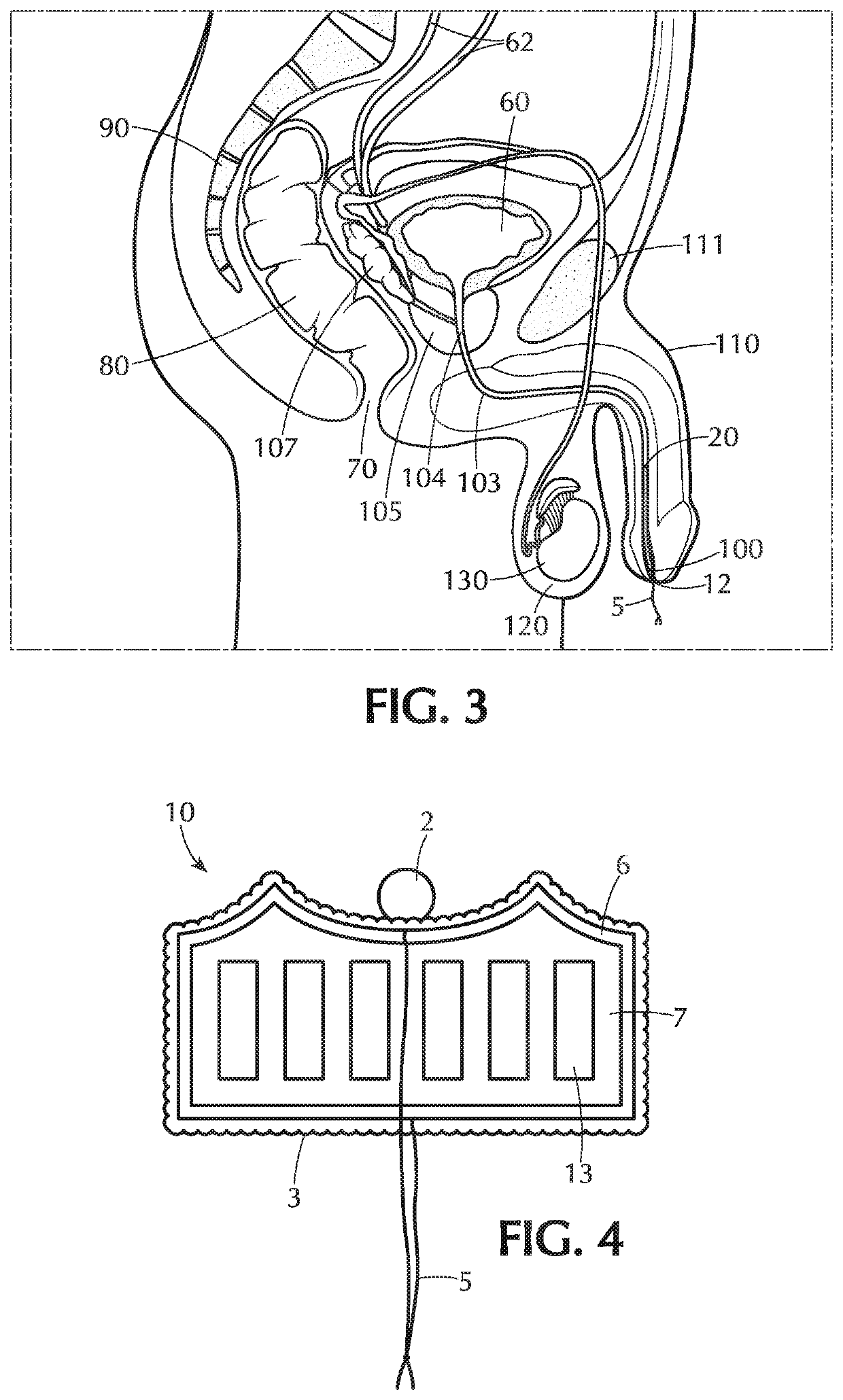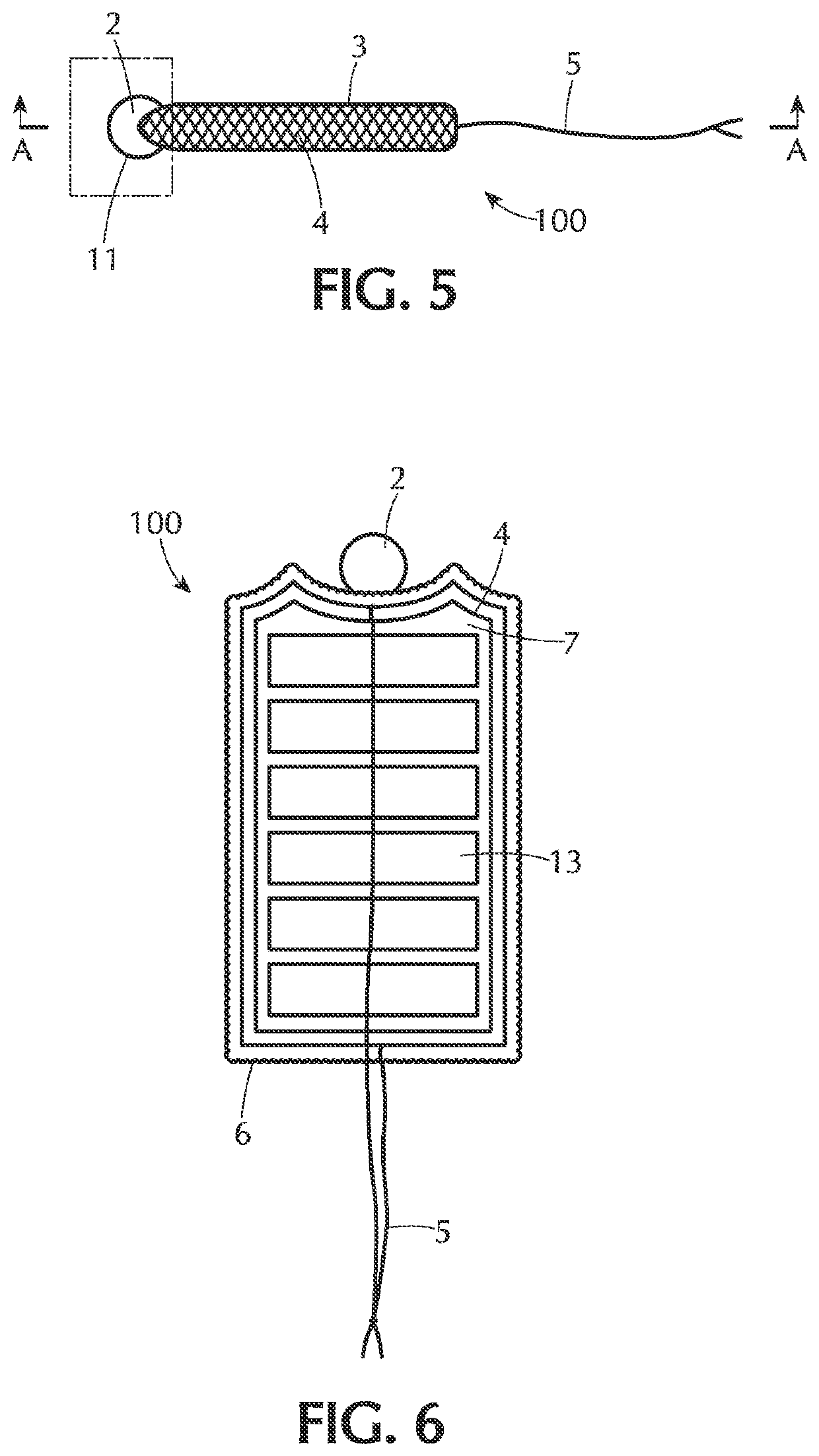Urinary Plug Device
a technology of urination and plugs, which is applied in the direction of prosthesis, catheters, surgery, etc., to achieve the effects of convenient use, minimal discomfort, and convenient placemen
- Summary
- Abstract
- Description
- Claims
- Application Information
AI Technical Summary
Benefits of technology
Problems solved by technology
Method used
Image
Examples
examples
[0099]Patient W is a healthy sixty year old female with total urinary incontinence. She is s / p radical robotic cystectomy with creation of orthotopic ileal neobladder 6 / 2018 and has been incontinent since that time. She wears several pads / day. Although she would like to be sexually active she cannot due to leakage issues. W / u of incontinence revealed no evidence of fistula. She has tried bulking agent in urethra, as well as two f / u operations using rectus fascia to close and support urethra which have failed. She has failed intra-vaginal devices placed to occlude her urethra (Poise Impressa). She refuses to wear an indwelling foley catheter. She refuses abdominal surgery to close urethra and create either continent cutaneous stoma she can catheterize, or creation of non-continent urinary diversion.
[0100]Patient X is a healthy 51 year old male s / p radiation therapy to prostate for prostate cancer, s / p radical robotic cysto-prostatectomy with creation of Indian Pouch urinary reservoir...
PUM
| Property | Measurement | Unit |
|---|---|---|
| diameter | aaaaa | aaaaa |
| length | aaaaa | aaaaa |
| diameter | aaaaa | aaaaa |
Abstract
Description
Claims
Application Information
 Login to View More
Login to View More - R&D
- Intellectual Property
- Life Sciences
- Materials
- Tech Scout
- Unparalleled Data Quality
- Higher Quality Content
- 60% Fewer Hallucinations
Browse by: Latest US Patents, China's latest patents, Technical Efficacy Thesaurus, Application Domain, Technology Topic, Popular Technical Reports.
© 2025 PatSnap. All rights reserved.Legal|Privacy policy|Modern Slavery Act Transparency Statement|Sitemap|About US| Contact US: help@patsnap.com



